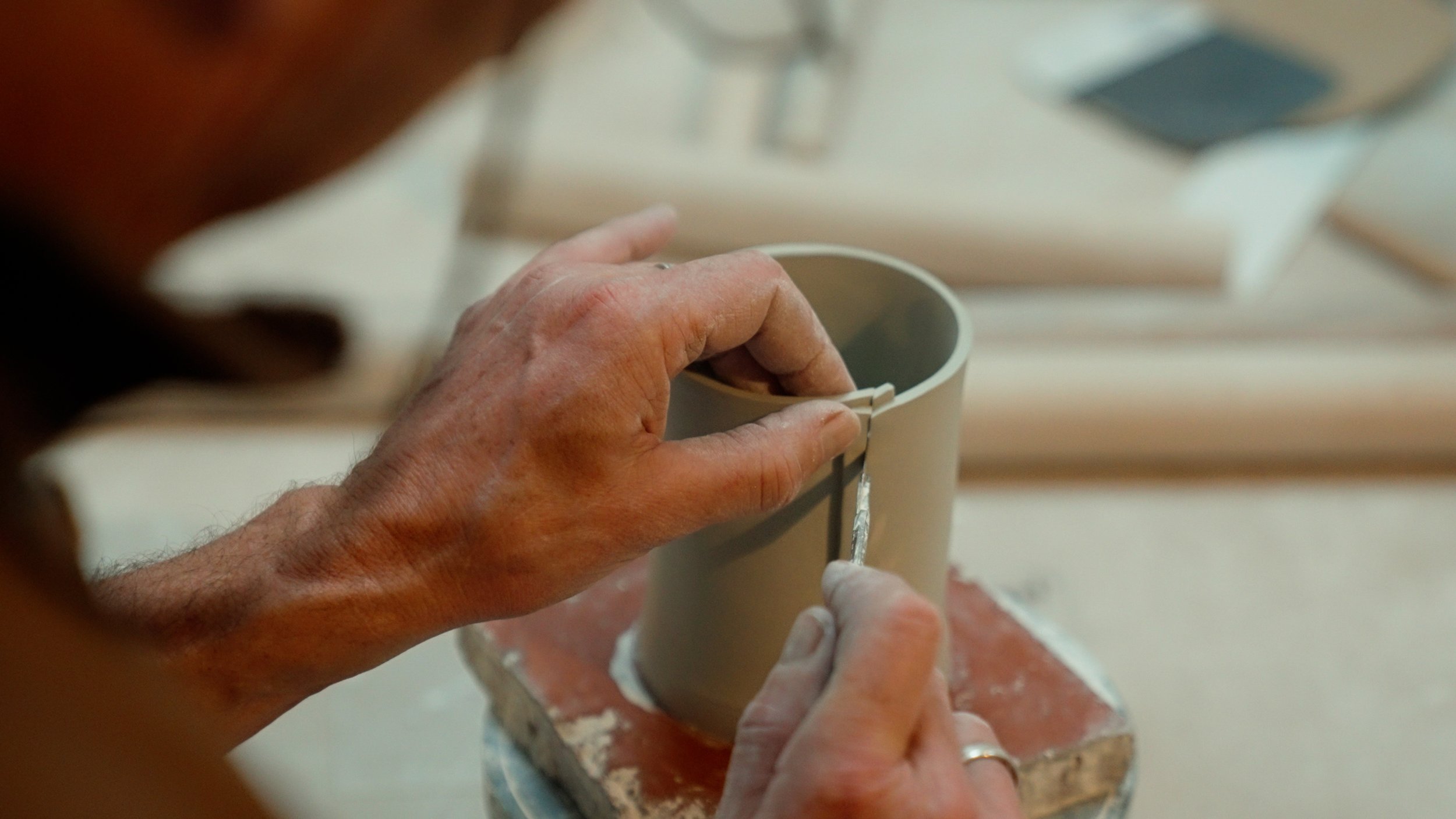In Conversation With: Richard Pomeroy
Richard Pomeroy
A ceramics exhibition in the Tithe Barn
TUESDAY, 1ST NOVEMBER 2022 - MONDAY, 26TH JANUARY 2023
OPEN DAILY, 10:00AM -5:00 PM
British potter Richard Pomeroy has been an artist for most of his life, painting in oil on canvas. He came to pottery recently, in 2015. All of the pieces are hand-built in his studio in Bruton, Somerset, using porcelain clay. We are delighted to welcome, in partnership with the Lyndsey Ingram Gallery, an exhibition of ceramics by Richard Pomeroy.
Can you tell us about your journey from painting to pottery? What inspired you to change medium?
I had completed a series of big paintings that felt like the end of a phase of my art and at the same time my daughter, Tallulah, returned from an internship in New York, and asked me to help her set up a pottery in our cellar. All those pottery materials around tempted me to put my thumbs into clay for the first time since school. There were a couple of years when I did both painting and pots, but the clay seduced me
Can you talk us through the method you’ve chosen for creating your pieces?
It’s a very basic hand building method - I roll out the clay into sheets and fold it around a base. Everything starts as a beaker - just add handles and fashion spouts to make mugs and jugs. Even the tea and coffee pots start as beakers - I fold over the top and add pieces to make the rim and the spout
What inspires your designs?
The clay and building method. I don’t sit down and draw out designs, I work with the clay and am restricted by what it can do. Simplicity, practicality and function are essential, with any luck elegance follows naturally
Why have you chosen to use porcelain for your work?
Porcelain has several qualities that other clays don’t have - translucence, strength even when thin so that my mugs can have thin rims, it rings beautifully when gently struck, it fires white. The whiteness is essential for me - my painting background instilled in me a love of colour and the bright glazes I use are displayed magnificently against the white background
In what way does colour speak to you?
Colour has so many meanings and emotions, both as individual colours - the thrill of bright red, and in combinations - gentle pink with celadon blue. It’s as expressive as sound and responds to mood and light. A world without colour is lifeless
What do you listen to, if anything, whilst you are creating your pottery?
Dub, Steve Reich, cricket, Talking Heads, Radio 4, Run-DMC, Philip Glass opera, Four Tet, and just very occasionally - silence
How do you view the idea of imperfection in your pieces?
The Leaning Tower of Pisa in C14th Italy, beauty spots in C16th Europe, Iga ware from C17th Japan, “Embracing Your Flaws” in C21st mental health culture - imperfection has long been celebrated and made desirable. My making method makes imperfection inevitable and I soon learned to love it. A pot that comes out wonky has character and so long as it performs its function is just as useful as a perfect one - and is different from other pots. Individuality is precious. Some pots emerge from the kiln with faults - or get dropped - and the Japanese mending culture called Kintsugi, where the mend is celebrated and enhanced with precious metal is a wonderful way to prolong the life of a pot and show that you care. A mended pot is a loved pot.




